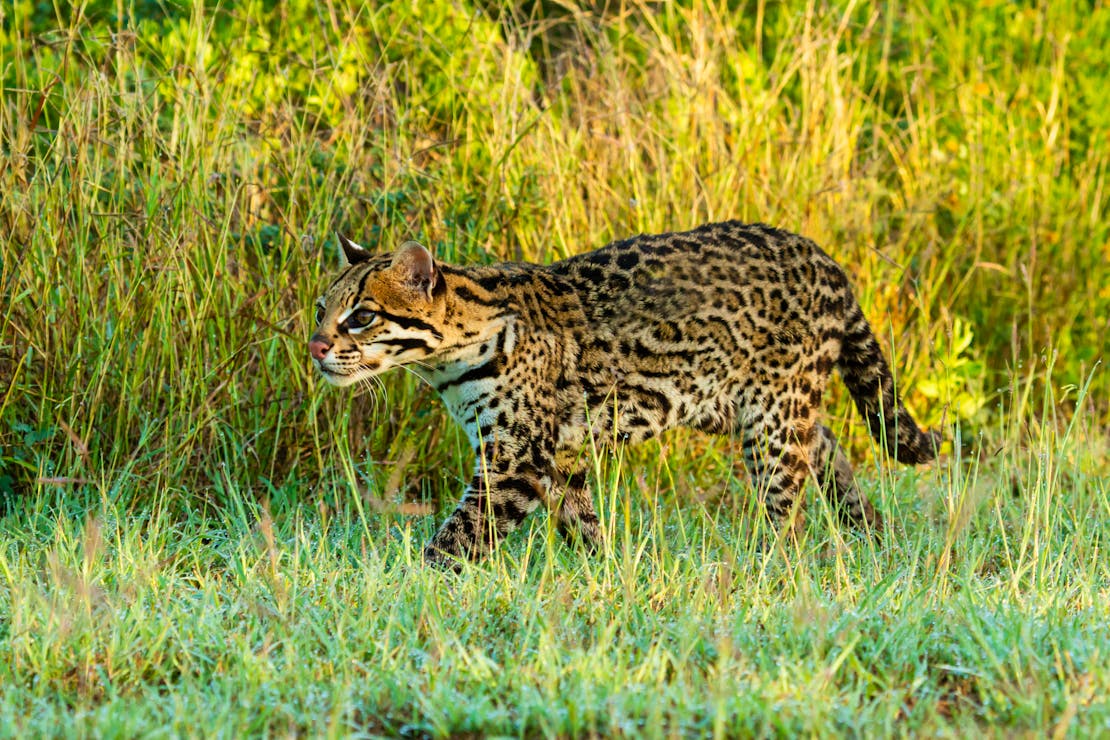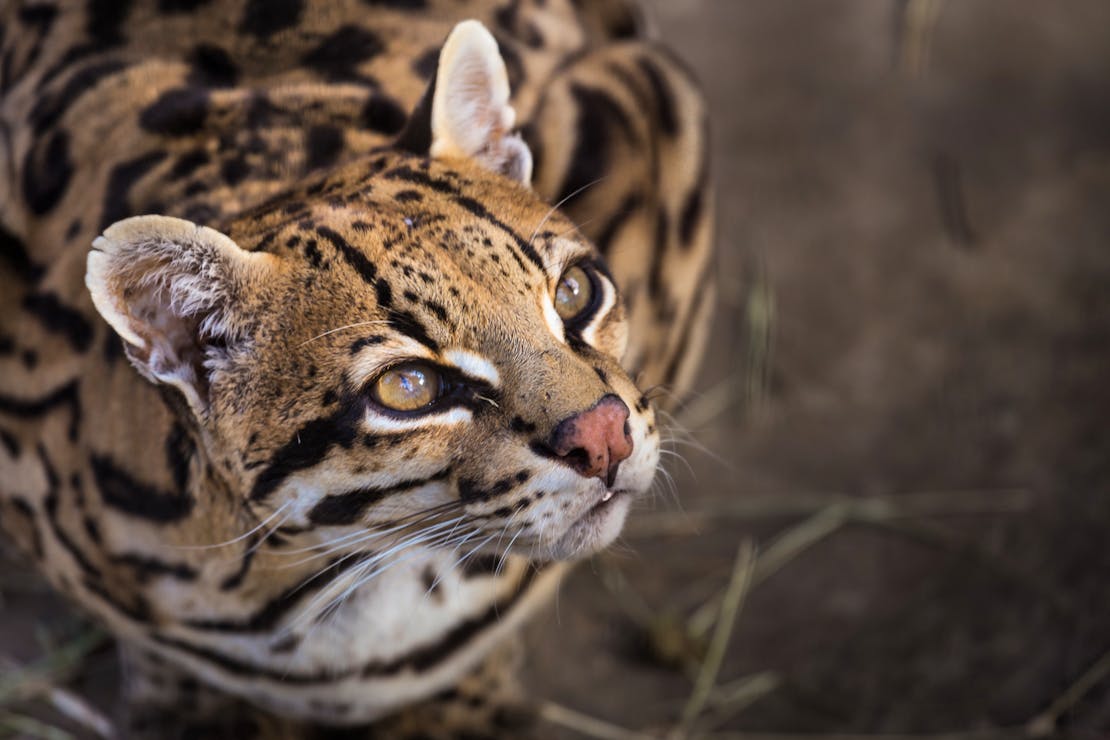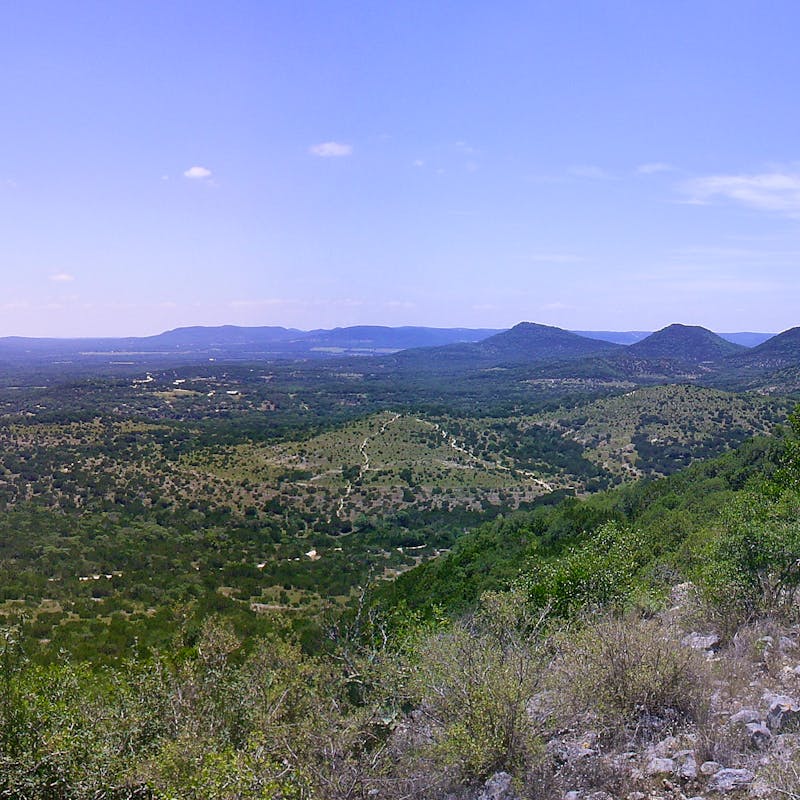Recovering endangered and imperiled animals is a multifaceted process. It takes many partners from a variety of backgrounds to find a path forward together for the recovery of the species and work with the local community to ensure the best chance of long-term success. A great example of this is the ocelot, an endangered small wildcat found in South Texas.
Learn more about how zoos, scientists and advocates are coming together to save ocelots in this Q&A with Dr. Shari Wilcox, Defenders of Wildlife’s Senior Texas Representative.
What does the ocelot population in South Texas look like?
There are fewer than 100 ocelots remaining in Texas. Their range once extended throughout the Southwest but now only two small breeding populations remain in South Texas.
The biggest threat to ocelots is the loss of habitat from expanding development. Roads present a particular hazard, as car strikes are the leading known cause of death of ocelots in Texas. They also face significant disturbance and destruction of their habitat from industrial development like the SpaceX experimental launch site at Boca Chica and liquid natural gas export facilities along the Gulf Coast.
What is the Ocelot Conservation Festival?
The Ocelot Conservation Festival brings the community together at the Gladys Porter Zoo, in Brownsville, Texas, each spring. Attendees learn about ocelots and how they can help save them. The festival is hosted by the U.S. Fish and Wildlife Service, the Friends of the Laguna Atascosa National Wildlife Refuge, the East Foundation and Defenders.
This year, the stars of the festival are the Gladys Porter Zoo’s two ocelots: Leeloo and Iggy! Not only do these two cats give zoo visitors a chance to see ocelots up close and learn more about them, but these individuals are also part of a special recovery program with the goal of future reintroductions of ocelots in Texas through the Recover Texas Ocelots Project.
How will the Recover Texas Ocelots Project work?
The project is led by U.S. Fish and Wildlife Service, East Foundation, Caesar Kleberg Wildlife Research Institute at Texas A&M University-Kingsville, Texas A&M Natural Resources Institute Texas Parks and Wildlife Department, and many more partners.
The Project aims to reintroduce ocelots to a portion of their historic range that is currently unoccupied. The goal is to increase the overall population of ocelots in Texas, expand their genetic diversity, and promote conservation, restoration and connectivity of ocelot habitat. This will include the establishment of the first Ocelot Conservation Facility that will house a targeted breeding program and create an environment for young ocelots to learn hunting skills and other natural behaviors that will prepare them for release into the wild.
What needs to happen before ocelot reintroductions can happen?
This project is still in its early stages. The effort to recover ocelots is complex and requires scientists to understand the present health and genetic diversity of the wild population, their locations on both public and private lands, and the threats they face on the landscape. Much of this work is in progress.
The construction of the Ocelot Conservation Facility has just started. Scientists are simultaneously working to address a number of challenges with artificial insemination central to the conservation breeding program. Wild cats are very tricky to breed!
For instance, over the last two years Iggy was paired with Leeloo through artificial insemination, but this never resulted in a pregnancy. Now the zoo is keeping the cats in the same space together and is hoping Leeloo will become interested in Iggy as a mate. If they are successful, the cats’ descendants could one day be a part of the reintroduction of ocelots to the wild.
How is Defenders supporting ocelot recovery?
Defenders works on many projects connected to ocelot recovery including participating in programs to restore and connect ocelot habitat, advocating for road crossings to help ensure safe passage for the cats, challenging development and disruption within habitat corridors, and supporting on the ground research.
Community support for these wildcats will help reduce the risk of human-wildlife conflict in the future. Defenders works on the ground to assess community perceptions of ocelots, raise awareness of these cats on the landscape and share best practices for coexisting with them. The Ocelot Conservation Festival is just one example of the education, outreach and conservation activities we are involved in.
How can readers help ocelots?
Anyone interested in helping ocelots can start by learning more about these fascinating cats and sharing their story with friends and family. You can even get the kids in your life involved with Defenders’ Bordercats/ Felinos de la Frontera, a bilingual booklet full of educational and fun activities for all ages.
If you live in or are visiting areas where ocelots are known to roam, please drive carefully. Vehicular collisions are the leading cause of death for these cats in Texas, so staying alert, watching for animals and stopping when it’s safe to do so can save a life!
Finally, consider supporting organizations like Defenders who are working to save ocelots!












